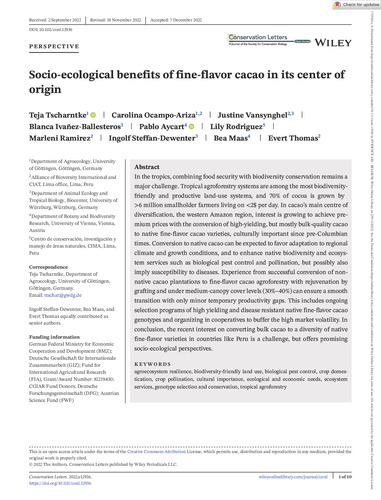Socio-ecological benefits of fine-flavor cacao in its center of origin
In the tropics, combining food security with biodiversity conservation remains a major challenge. Tropical agroforestry systems are among the most biodiversity friendly and productive land-use systems, and 70% of cocoa is grown by >6 million smallholder farmers living on <2$ per day. In cacao’s main centre of diversification, the western Amazon region, interest is growing to achieve premium prices with the conversion of high-yielding, but mostly bulk-quality cacao to native fine-flavor cacao varieties, culturally important since pre-Columbian times. Conversion to native cacao can be expected to favor adaptation to regional climate and growth conditions, and to enhance native biodiversity and ecosystem services such as biological pest control and pollination, but possibly also imply susceptibility to diseases. Experience from successful conversion of non native cacao plantations to fine-flavor cacao agroforestry with rejuvenation by grafting and under medium-canopy cover levels (30%–40%) can ensure a smooth
transition with only minor temporary productivity gaps. This includes ongoing selection programs of high yielding and disease resistant native fine-flavor cacao genotypes and organizing in cooperatives to buffer the high market volatility. In conclusion, the recent interest on converting bulk cacao to a diversity of native fine-flavor varieties in countries like Peru is a challenge, but offers promising socio-ecological perspectives.

